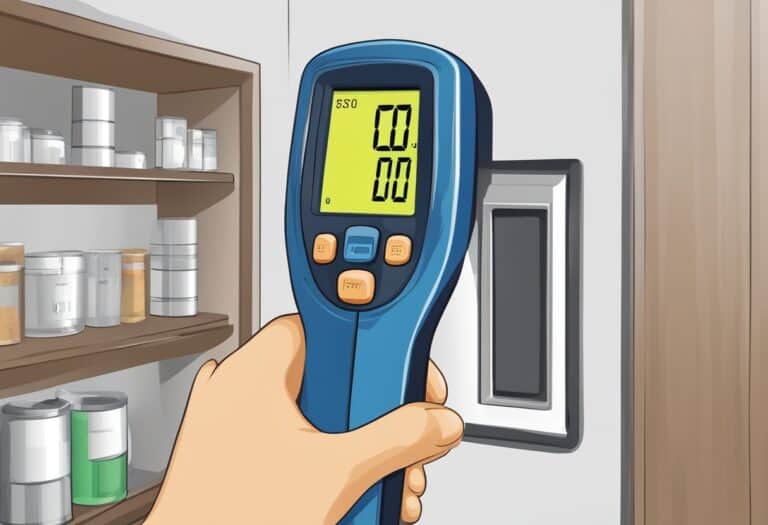Fog is a common weather phenomenon that occurs when tiny water droplets are suspended in the air near the Earth’s surface, leading to reduced visibility.
Understanding how fog forms requires a grasp of meteorological conditions and physical principles. It generally forms under stable conditions when the air near the ground is cooled to the point where it can no longer hold all the moisture, leading to condensation. Various factors such as radiative cooling, the mixing of air masses with different temperatures, and the presence of water vapor contribute to its development.
Different types of fog are the result of differing environmental conditions. Radiation fog, for instance, develops on clear nights with calm weather as the ground loses heat through radiation, cooling the air above it. Advection fog occurs when moist air moves over a cooler surface, like a cold ocean current, and the air cools to the point where fog forms. The topography of the land can also influence fog formation, with valleys and coastal areas more prone to experiencing foggy conditions.
While it can create picturesque landscapes, fog can also pose challenges, particularly in transportation, as it significantly reduces visibility and can impact travel, safety, and economic activities.
Fog forms when air is cooled to its dew point, causing moisture to condense into tiny droplets. Influenced by temperature, moisture, and terrain, it reduces visibility, impacting activities like driving and flying.
Formation of Fog
When you walk outside on a cool morning and find yourself enveloped in a misty haze, you are experiencing fog, a meteorological phenomenon that forms when air temperature and dew point are near identical, causing water vapor to condense into tiny water droplets suspended in the air. Understanding fog requires a grasp of its various types and the conditions under which it manifests.
Radiation Fog
Radiation fog emerges under clear skies and calm conditions, typically at night or early morning when the ground cools rapidly through radiation. As the ground loses heat, the adjacent layer of air becomes chilled, reaching saturation point and fostering condensation, which appears as a dense layer of fog near the ground level.
Advection Fog
Unlike radiation fog, advection fog occurs when moist air moves over a cool surface, often the ocean. This is common along coastlines, such as the California coast, where the warmth of the ocean meets cooler coastal air, causing the moisture in the air to condense. San Francisco is famous for this kind of fog where the warm air over the Pacific Ocean encounters the cool Californian current.
Elevation and Fog
Fog is also influenced by elevation. Mountain and valley fogs, known as upslope fog and valley fog respectively, develop as air moves up a mountain and cools adiabatically or as cooler air settles in low-lying areas such as the Central Valley of California. Under the right conditions, air cools until it reaches saturation and droplets form.
Types of Fog and Related Phenomena
The types of fog vary based on the conditions of their formation. For example, freezing fog occurs when water droplets in the fog freeze upon contact with surfaces, creating a layer of ice. Evaporation fog, such as sea fog and steam fog, forms when cold air lies over warm water. Ice fog appears in the Arctic, when temperatures fall below freezing and the water droplets in the fog freeze into tiny ice crystals.
Fog and Climate
The influence of fog on a region’s climate can be significant. Areas with frequent fog, such as the Desert Southwest or Southern Europe, can experience reduced temperature ranges, elevated humidity, and unique ecological impacts. Fog contributes to the climatic character of coastal Chile and other regions where it serves as an essential source of moisture during dry seasons.
Physical Principles of Fog
When you encounter fog, you are essentially walking through a cloud on the ground. Understanding the physical principles involves grasping the interplay between humidity, temperature, and particulates in the air.
Humidity and Condensation
Humidity is the amount of water vapor present in the air. For fog to form, the humidity in the air must reach 100%, which is a state of saturation. At this point, the air cannot hold any more water vapor, leading to condensation. This process requires condensation nuclei, like dust, pollen, or smoke particles, around which water vapor can condense into tiny water droplets that make up fog.
Evaporation and Saturation
The exchange between evaporation and condensation determines the saturation level of the air. When the rates of evaporation and condensation are equal, the air is saturated. This balance is crucial as it ensures that no additional water vapor stays in the gaseous phase – excess vapor becomes part of the water droplets that form fog.
Temperature and Fog Formation
The temperature of the air plays a pivotal role in fog formation. The dew point temperature is the temperature at which air becomes saturated and condensation begins. When the air temperature cools to the dew point and beyond, provided the right conditions like a cool surface beneath, fog forms. Some fog types involve supercooled water droplets, which stay liquid even below the freezing point of water. Situations where warmer air sits over colder air, known as a temperature inversion, can also contribute to fog formation, as the warmer air traps moisture near the cool surface and leads to condensation.
Impact of Fog

As you explore the phenomenon of fog, it’s essential to understand its significant effects on daily life and the environment. From disrupting travel to interacting with various environmental factors, fog has diverse and notable impacts.
Visibility and Transportation
Fog drastically reduces visibility, which can influence your ability to perceive distances accurately while driving. The National Weather Service often issues advisories when fog is expected to hinder visibility to less than a quarter mile. Sectors such as aviation and ground transportation rely on forecasting to anticipate delays and mitigate hazardous conditions. In regions like the Pacific Northwest or Central Valley, fog can become especially dense, leading to dangerous travel disruptions.
- Driving: Reduced visibility can make it difficult to see road signs, traffic signals, and other vehicles.
- Aviation: Pilots require clear skies for takeoff and landing, and fog can lead to significant flight delays or cancellations.
Fog Interaction with Environment
Fog forms when moisture in the air condenses into tiny water droplets near the Earth’s surface. This interaction can result in various environmental effects:
- Forest Moisture: Fog can be a crucial source of moisture for forests, especially in coastal areas.
- Air Quality: As fog settles, it can interact with smoke or pollution, sometimes creating haze which can impact air quality.
Fog’s role in the environment can be complex as it contributes to the ecosystem’s moisture levels but can also combine with pollutants, affecting both the natural habitat and the air you breathe.
Predicting and Responding to Fog
Understanding fog forecasting and the appropriate safety measures can significantly enhance your preparedness when dealing with this weather phenomenon.
Fog Forecasting
Accurate fog prediction remains a challenge due to the multitude of factors that contribute to its formation. However, advancements in meteorology, such as those detailed in studies like the Fog remote sensing and modeling field project, have led to improved forecasting techniques. In regions like Newfoundland and the Grand Banks, where the cool Labrador Current meets the warm Gulf Stream, dense fog is a common occurrence, especially during the summer months. The National Weather Service often utilizes detailed weather patterns and forecast models to predict when and where fog will form. Calm winds and high humidity levels detected can further support these forecasts, providing crucial data for predicting fog in your area.
- Forecasting Entities to Note:
- Weather Patterns: Particular attention to local shifts can aid prediction.
- Calm Winds: They are an essential factor in fog development.
- Visibility Reports: Keep an eye on updates from local weather offices.
Safety Measures and Advice
Fog can reduce visibility drastically, making travel conditions dangerous. When you’re caught in foggy conditions, it’s imperative to slow down and use low-beam headlights. For aviation, fog poses significant risks; hence, airports have strict protocols to follow when visibility drops. The development of these safety measures often involves analyzing data from past incidents and expert recommendations. For example, the Referenceless prediction of perceptual fog density and perceptual image defogging study offers insights into evaluating fog’s impact on visibility scientifically, which helps in framing guidelines for safe travel during fog.
- Important Safety Measures:
- Reduce Speed: Slow down to maintain a safe stopping distance.
- Headlights: Use low beams to increase your visibility to others.
- Travel Updates: Stay informed with the latest forecasts and travel advice.
Remember, your safety and the safety of others during foggy conditions depend on how well you adapt to the visibility limitations and heed to the advice provided by weather authorities and transport offices.
Frequently Asked Questions
In this section, you’ll find concise answers to common queries about the intriguing meteorological phenomenon of fog formation.
What are the conditions that lead to the formation of fog over land?
Fog over land occurs when humid air cools to its dew point near the ground, leading to the condensation of water droplets that stay suspended in the air. This is often caused by clear skies, calm winds, and humid conditions.
How does the time of day influence the occurrence of fog, particularly in the morning?
Fog is most likely to form in the morning due to the overnight cooling of the air near the surface. After sunset, the ground loses heat through radiation, cooling the adjacent air and increasing the relative humidity, which can precipitate fog formation.
Can you explain the phenomenon of radiation fog and the factors contributing to its development?
Radiation fog develops on clear nights with calm air when the ground rapidly loses heat through thermal radiation, cooling the warm, moist air above it until it reaches saturation and droplets form. It usually dissipates after sunrise when the air starts to warm.
What meteorological conditions result in advection fog?
Advection fog occurs when warm, moist air moves over a cooler surface, causing the air to cool down to its dew point and form fog. This type is common in coastal areas where sea breezes can blow warm air over colder ocean currents.
What mechanisms cause fog to dissipate?
Fog dissipates when the air temperature rises and lowers the relative humidity, or when wind increases, mixing drier air with the saturated fog layer. Rising sunlight can also evaporate the water droplets, clearing the fog.
How does cold weather contribute to the formation of fog during the winter season?
During the winter, longer nights and shorter days allow for extensive cooling of the surface. When warm, moist air passes over these cold surfaces, the air cools to its dew point and forms fog, which can persist in colder conditions due to less intense sunlight.







